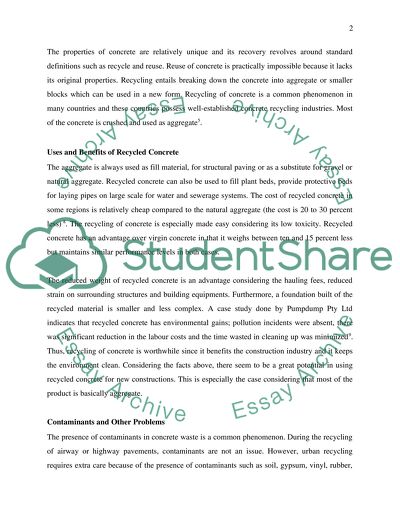Recycling of concrete Essay Example | Topics and Well Written Essays - 750 words. Retrieved from https://studentshare.org/engineering-and-construction/1436849-recycling-of-concrete
Recycling of Concrete Essay Example | Topics and Well Written Essays - 750 Words. https://studentshare.org/engineering-and-construction/1436849-recycling-of-concrete.


